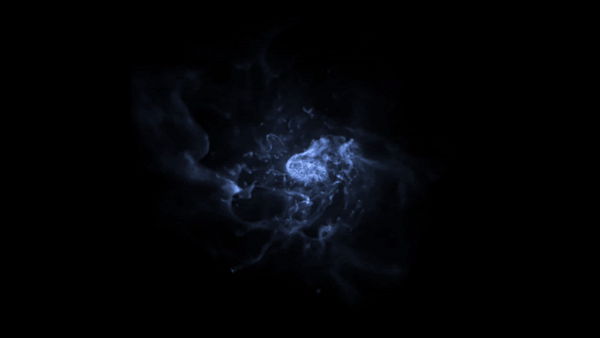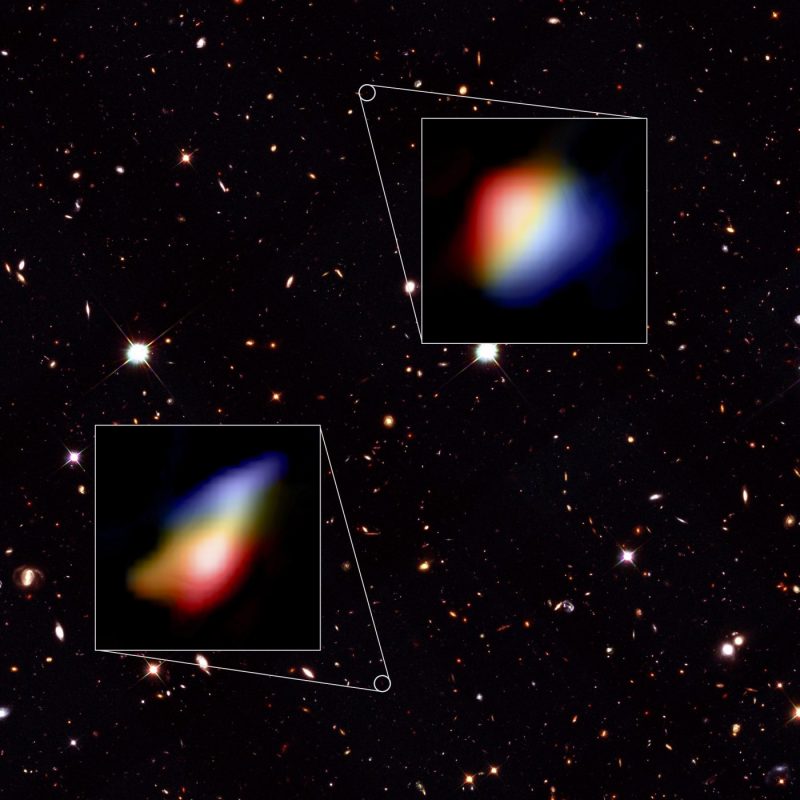
At last week’s meeting of the American Astronomical Society in Washington D.C., astronomers from University of Cambridge in England reported looking back to a time soon after the Big Bang and discovering swirling gas in some of the earliest galaxies. That is, these small galaxies – observed as they appeared nearly 13 billion years ago – already spun like a whirlpool, similar to our own Milky Way and many other spiral galaxies. These astronomers said it’s the first time they’ve detected movement in such young galaxies, so early in the history of the universe.
The results are reported in the peer-reviewed journal Nature.
The researchers – led by Renske Smit from the Kavli Institute of Cosmology at the University of Cambridge – used the Atacama Large Millimeter/submillimeter Array (ALMA) to conduct this research. The team said it expected more chaos in the structure of these early galaxies.
They were surprised to find these newly born galaxies swirling and rotating in a whirlpool motion.

A statement from these astronomers explained:
Light from distant objects takes time to reach Earth, so observing objects that are billions of light years away enables us to look back in time and directly observe the formation of the earliest galaxies. The Universe at that time, however, was filled with an obscuring ‘haze’ of neutral hydrogen gas, which makes it difficult to see the formation of the very first galaxies with optical telescopes.
Smit and colleagues including Stefano Carniani, also at Cambridge, used ALMA to observe two small newborn galaxies, as they existed just 800 million years after the Big Bang. By analysing the spectral ‘fingerprint’ of the far-infrared light collected by ALMA, they were able to establish the distance to the galaxies and, for the first time, see the internal motion of the gas that fuelled their growth.
The astronomers also found that – despite their relatively small size, about five times smaller than the Milky Way – these galaxies were forming stars at a higher rate than other young galaxies. Smit commented:
In the early universe, gravity caused gas to flow rapidly into the galaxies, stirring them up and forming lots of new stars. Violent supernova explosions from these stars also made the gas turbulent.
We expected that young galaxies would be dynamically ‘messy’, due to the havoc caused by exploding young stars, but these mini-galaxies show the ability to retain order and appear well regulated. Despite their small size, they are already rapidly growing to become one of the ‘adult’ galaxies like we live in today.
The astronomers said the data from their project on small galaxies paves the way for larger studies of galaxies during the first billion years of cosmic time.

Bottom line: Astronomers from University of Cambridge in England used the ALMA telescope in Chile to identify small, very young galaxies – only 800 million years after the Big Bang – already taking on a spiral shape.
Source: Rotation in [C II]-emitting gas in two galaxies at a redshift of 6.8











